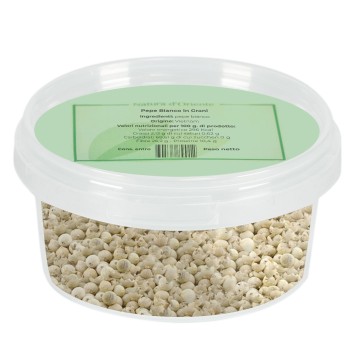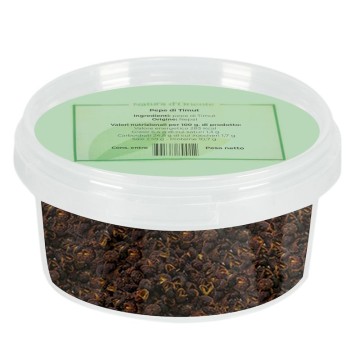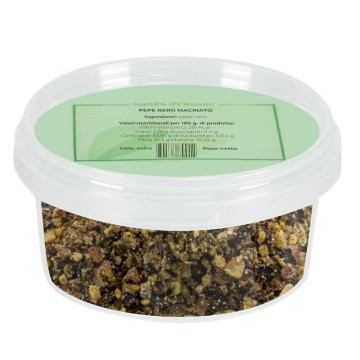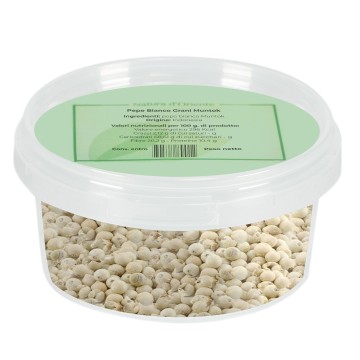The green Sichuan pepper is obtained from a different species from the one from which the red Sichuan pepper is obtained and in fact it has quite different organoleptic characteristics. Sichuan pepper is obtained from a berry which, although belonging to another family, is not very different from that of pepper, but it is used completely differently, in fact the seeds, which are very bitter, are thrown and used only the peel.
The plant and the fruit
Sichuan pepper is obtained from the berries of different species of plants belonging to the genus Zanthoxylum of the Rutaceae family, therefore it has absolutely nothing to do with piper nigrum and it is so-called a false pepper. The genus Citrus, that of citrus fruits, also belongs to the Rutaceae family. Same family different genus, so Sichuan pepper and citrus are distantly related? Not so far from the taste, one of the organoleptic characteristics of Sichuan pepper is a hint of lemon. So much so that one of the alternative names of the spice is Indonesian pepper-lemon.
As we anticipated the Sichuan pepper is obtained from different species of the genus Zanthoxylum, in various texts Zanthoxylum piperitum is indicated in particular, but it is not true, in fact this species is widespread above all in Japan and Korea. In reality, in China, Zanthoxylum bungeanum and e Zanthoxylum armatum are much more used, from the first one obtains the red pepper and from the second the green one.
The plant, which can appear both as a small tree and as a shrub, is a deciduous plant with flowering between April and May. The berries are produced by female flowers and when ripe they open spreading the seeds, almost all species have thorns, but not the Japanese variety Asakura sansho of piperitum and that is why it is intensively cultivated. The plant tolerates extreme changes in temperature well, not fearing neither the cold nor the heat, more fragile instead of both drought and stagnation of water. Place of origin and cultivation Sichuan is an internal province (landlocked) in the southwest of China, so the place of origin of the spice is already written in the name, this does not mean that it is widely cultivated and used in Japan, Korea , Indonesia, Butan, India.
Properties and benefits of green Sichuan pepper
As usual we remember that talking about the nutritional characteristics of a spice is not worth it, vitamins, minerals, but even the calories, given the quantity of pepper that are consumed in a meal become insignificant even if perhaps on the canonical 100grams they would not be.
If instead we talk about the properties attributed by traditional medicine to Sichuan pepper, the pain-relieving one is a classic attributed to practically every pepper or false pepper, as well as the digestive properties (and once again we remind you that today we know that if you have serious problems of gastritis or worse of an ulcer, spices are not advisable), the more original is the use against itching.
We know that the most particular characteristic of pepper of Sichuan is to leave a feeling of numbness in the mouth, science has identified as likely responsible for this effect the Hydroxy-alpha-sanshool , a component that constitutes uses 3% of the spice. Since the mechanism acts on pain receptors, it is likely confirmation, in this case, of the claims of traditional medicine on the anti-pain effect.
Curiosities about green Sichuan pepper
The spice is one of the oldest in the Chinese tradition, it is even mentioned in a poem by Confucius, it seems that instead the soldiers consumed it during the marches, to stay awake. Since it does not have an exciting effect, it is likely that more than anything else the anti-pain effect helped them to endure fatigue.
Use of Sichuan green pepper in the kitchen
The use in the kitchen is similar to that of pepper, the taste is not even so different, at least at the beginning, when you consume Sichuan pepper there are three phases: spiciness (not very ports, lower than that of pepper and chilli), therefore the moderate spiciness gives way to a marked aromaticity in which, as we have said, citrus notes stand out and finally the feeling of numbness . The organoleptic characteristics vary from species to species (as we have said, the Sichuan pepper spice is obtained from various different species) in particular green pepper has aand less intense than red and a stronger numbing effect. In Asian cuisines, Sichuan pepper is a key ingredient in the preparation of various spice blends including the Chinese five-spice. For the recipes from the web we have chosen a dessert.
Semifreddo with fruit and Sichuan pepper
Ingredients:
- Eggs 2
- Sugar 80gr
- Vegetable whipping cream 250ml
- Vegetable milk 50gr
- Sichuan pepper 10gr
- Isinglass 1 sheet
- Pulp of a passion fruit
- Vegetable white yogurt 1 jar
- Pineapple 1
Preparation
1) Make a mousse by mixing whipped cream and yogurt.
2) Put it in the refrigerator.
3) Prepare a saucepan with sugar and water in a 1: 1 ratio.
4) Prepare the pineapple chips by slicing a few slices very thinly.
5) Wet them with the sugar syrup.
6) Put them in the oven at 70 ° for about 2 and a half hours.
7) Soak the gelatin sheet in cold water.
8) Heat milk and Sichuan pepper in a saucepan.
9) Add the wrung isinglass sheet and turn off once it reaches a boil.
10) Whip the egg yolks with the rest of the sugar.
11) Add the passion fruit pulp and the filtered milk.
12) Whip the unsweetened cream and pour it into the egg and milk mixture.
13) Pour everything into special round silicone molds.
14) Leave to cool in the fridge and then in the freezer for a few minutes.
15) Add the chips and some Chinese peppercorns for garnish.
Recipe source: Tuttogreen.it






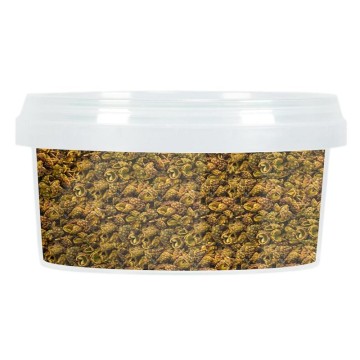


 No reward points for this product.
No reward points for this product.




